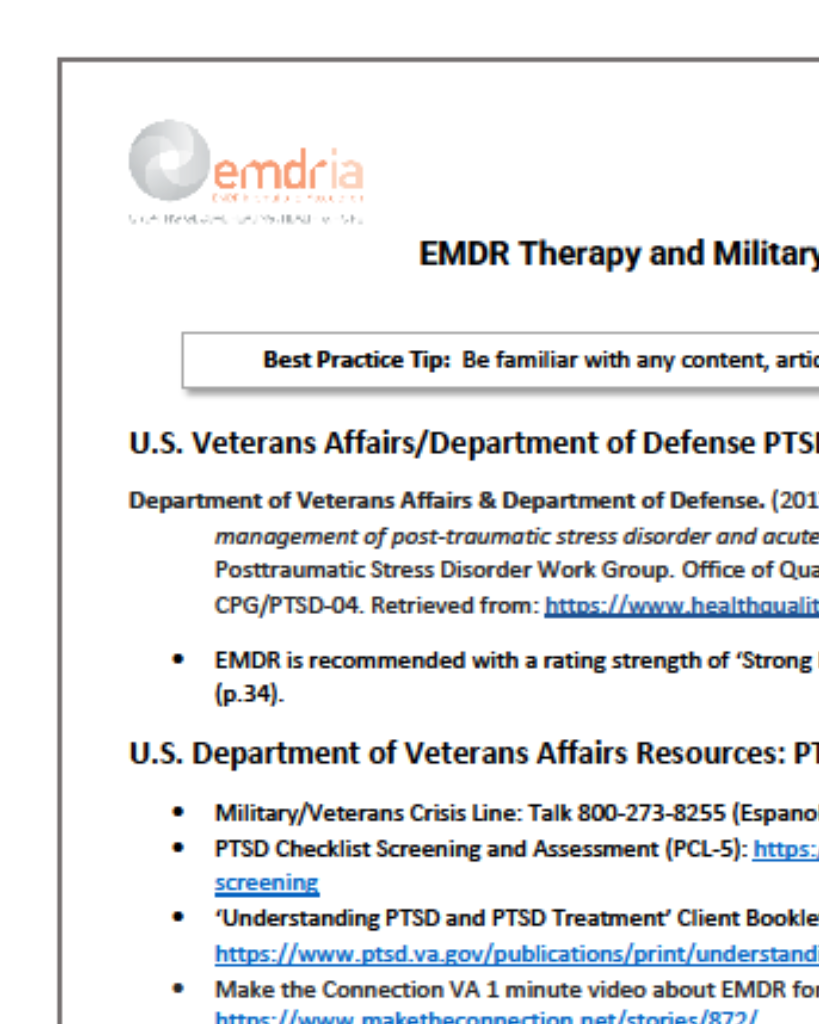Desensitizing addiction: Using eye movements to reduce the intensity of substance-related mental imagery and craving
Data suggest that eye movements of EMDR can be used to reduce intensity of substance-related imagery and craving.
Article Abstract
“Eye movement desensitization and reprocessing (EMDR) is an effective treatment for posttraumatic stress disorder. During this treatment, patients recall traumatic memories while making horizontal eye movements (EM). Studies have shown that EM not only desensitize negative memories but also positive memories and imagined events. Substance use behavior and craving are maintained by maladaptive memory associations and visual imagery. Preliminary findings have indicated that these mental images can be desensitized by EMDR techniques. We conducted two proof-of-principle studies to investigate whether EM can reduce the sensory richness of substance-related mental representations and accompanying craving levels. We investigated the effects of EM on (1) vividness of food-related mental imagery and food craving in dieting and non-dieting students and (2) vividness of recent smoking-related memories and cigarette craving in daily smokers. In both experiments, participants recalled the images while making EM or keeping eyes stationary. Image vividness and emotionality, image-specific craving and general craving were measured before and after the intervention. As a behavioral outcome measure, participants in study 1 were offered a snack choice at the end of the experiment. Results of both experiments showed that image vividness and craving increased in the control condition but remained stable or decreased after the EM intervention. EM additionally reduced image emotionality (experiment 2) and affected behavior (experiment 1): participants in the EM condition were more inclined to choose healthy over unhealthy snack options. In conclusion, these data suggest that EM can be used to reduce intensity of substance-related imagery and craving. Although long-term effects are yet to be demonstrated, the current studies suggest that EM might be a useful technique in addiction treatment.”
—Description from publisher
Article Access
Open Access
Littel, M., van den Hout, M. A., & Engelhard, I. (2016). Desensitizing addiction: Using eye movements to reduce the intensity of substance-related mental imagery and craving. Frontiers in Psychiatry, 7, 14. Open access: https://doi.org/10.3389/fpsyt.2016.00014
Date
February 7, 2016
Creator(s)
Marianne Littel, Marcel A. van den Hout, Iris M. Engelhard
Topics
Addictions
Extent
11 pages
Publisher
Frontiers
Rights
Copyright © 2016 Littel, van den Hout and Engelhard. This is an open-access article distributed under the terms of the Creative Commons Attribution License (CC BY). The use, distribution or reproduction in other forums is permitted, provided the original author(s) or licensor are credited and that the original publication in this journal is cited, in accordance with accepted academic practice. No use, distribution or reproduction is permitted which does not comply with these terms.
APA Citation
Littel, M., van den Hout, M. A., & Engelhard, I. (2016). Desensitizing addiction: Using eye movements to reduce the intensity of substance-related mental imagery and craving. Frontiers in Psychiatry, 7, 14. Open access: https://doi.org/10.3389/fpsyt.2016.00014
Audience
EMDR Therapists, Other Mental Health Professionals
Language
English
Content Type
Article, Peer-Reviewed
Access Type
External Resource, Open Access




